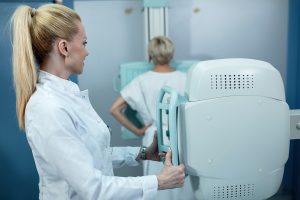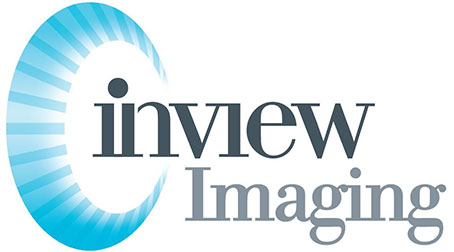Mammograms are crucial for early detection of breast cancer. In 2024, advancements in technology make these screenings more effective than ever. Women need to stay informed about the latest guidelines and recommendations for regular mammography screenings, quality breast cancer screening, and effective breast cancer screening strategies. Understanding the benefits of regular screenings can save lives. This listicle highlights essential tips for preparing for your mammogram, what to expect during the process, and how to interpret your results. We’ll also cover common myths and facts surrounding mammograms to help you make informed decisions about your health. Get ready to empower yourself with knowledge and take charge of your breast health. Scroll down for reviews of our top picks on mammogram services and resources that can guide you through this important journey.
Key Takeaways

-
Embrace AI-enhanced imaging technologies, as they can improve accuracy in mammogram results and help in early detection of breast cancer.
-
Consider 3D mammography for a more detailed view of breast tissue, which can lead to fewer false positives and better outcomes.
-
Stay informed about liquid biopsy tests, as they offer a non-invasive option for monitoring breast cancer and could become widely available in 2024.
-
Explore thermography screening as a complementary tool; while not a replacement for traditional methods, it can provide additional insights.
-
Keep an eye on wireless ultrasound advancements, which may offer more comfortable and accessible screening options in the near future.
-
Consult with healthcare providers about these emerging technologies to make informed decisions regarding breast health screenings.
1. AI-enhanced imaging
AI-enhanced imaging represents a breakthrough in mammogram technology. These advancements leverage sophisticated algorithms to improve the accuracy of readings. This reduces false positives, which can lead to unnecessary stress and additional procedures for patients.
Radiologists now benefit from AI tools that assist in prioritizing cases. This helps them focus on urgent and complex cases first, streamlining workflow within health systems. AI integrations enable technologists to analyze images more efficiently, leading to quicker diagnoses.
Recent innovations in supplemental imaging techniques have also emerged. These methods enhance image quality, allowing for better detection of lesions and abnormalities. The use of advanced compression techniques further optimizes image clarity without compromising detail.
Statistics show that implementing AI can increase diagnostic accuracy by up to 20%. This means fewer missed cancers and improved patient outcomes. The impact of these technologies extends beyond just diagnostics; they also enhance accessibility to quality healthcare.
AI’s role in mammography demonstrates its potential to transform breast cancer screening. As these technologies evolve, they promise to make significant improvements in early detection rates and overall patient care.
2. 3D mammography
3D mammography, also known as digital breast tomosynthesis, revolutionizes breast cancer detection. This advanced technology enhances traditional 2D mammography by creating a three-dimensional image of the breast.
The primary advantage of 3D mammography is its improved detection rates. Studies show that it increases cancer detection rates by up to 40% compared to standard mammograms. This means more cancers are found at earlier stages when treatment is most effective.
Another significant benefit is the reduction in follow-up imaging. With clearer results, patients often avoid unnecessary callbacks for additional tests. This leads to less anxiety and a smoother experience during mammography screenings.
Healthcare facilities across the U.S. are rapidly adopting this technology. As of 2024, over 60% of mammography facilities offer 3D options. This shift reflects a commitment to improving patient outcomes and utilizing the latest in breast cancer screening technology.
In terms of accessibility, many insurance plans now cover 3D mammograms, making them more available to women. The growing number of studies supports their effectiveness, leading to increased trust among patients and providers alike.
3. Liquid biopsy
Liquid biopsy serves as a non-invasive method for detecting cancer markers through blood samples. This innovative technology analyzes circulating tumor DNA (ctDNA) and other components in the bloodstream, offering a new avenue for cancer detection.
The potential of liquid biopsy to complement traditional imaging techniques in breast cancer screening is significant. Traditional mammograms focus on tissue changes within the breast. In contrast, liquid biopsies can reveal molecular changes much earlier, potentially identifying cancer before it becomes visible through imaging. This early detection can lead to timely interventions, improving patient outcomes.
Future implications of liquid biopsy extend into personalized treatment plans. By analyzing specific genetic mutations found in ctDNA, doctors can tailor therapies that target individual tumors effectively. Studies show that using liquid biopsies can improve treatment decisions by providing real-time insights into how a tumor responds to therapy.
The streamlined workflow of liquid biopsies makes them appealing for widespread use. Blood tests are generally easier to administer than invasive tissue biopsies, reducing discomfort for patients. As technology advances, the accuracy and reliability of these tests are expected to improve, making them a vital part of breast cancer management strategies.
4. Thermography screening
Thermography screening uses infrared imaging to detect heat patterns in the breast. This technique identifies abnormal areas that may indicate breast issues, including cancer.
One significant benefit of thermography is its ability to serve as a supplementary tool for women with dense breast tissue. Dense tissue can make traditional mammograms less effective. In fact, studies show that thermography can improve detection rates in these cases by highlighting areas of concern that might be missed otherwise.
Despite its advantages, thermography has limitations. It is not currently recognized as a standalone screening method. The American Cancer Society states that it should not replace mammograms. Thermography cannot determine the presence of cancer on its own and lacks the specificity needed for definitive diagnosis. False positives can lead to unnecessary anxiety and further testing.
Moreover, the effectiveness of thermography varies among individuals. Factors such as age, hormonal changes, and body composition can influence results. While thermography provides valuable insights into breast health, it should complement rather than replace traditional screening methods.
In summary, thermography offers an innovative approach to breast health monitoring, particularly for women with dense breast tissue. However, understanding its limitations is crucial for making informed decisions about screening options. Always consult healthcare professionals when considering screening methods.
5. Wireless ultrasound
Wireless ultrasound offers a portable and accessible option for breast cancer screening. This technology allows healthcare providers to conduct screenings in various settings, including clinics, mobile units, and even at home.
The ease of use is a significant advantage. Wireless ultrasound devices are user-friendly and require minimal training. This simplicity enables faster examinations, leading to rapid results. Women can receive their results on the same day, reducing anxiety and allowing for quicker follow-up if necessary.
Statistics show that access to traditional mammography can be limited for many women, particularly in rural or underserved areas. Wireless ultrasound has the potential to bridge this gap. By bringing screening directly to women who may not have easy access to healthcare facilities, it can significantly improve screening rates among populations that typically experience barriers to care.
In many studies, wireless ultrasound has demonstrated effectiveness comparable to traditional methods. For example, a study published in an epub highlighted how wireless systems detected tumors effectively in diverse populations. This technology not only addresses logistical challenges but also empowers women by providing them with more options for their health.
Final Remarks
The future of mammography in 2024 is bright. With advancements like AI-enhanced imaging, 3D mammography, and liquid biopsy, you have more options than ever for early detection. These technologies not only improve accuracy but also make the screening process easier and less stressful.
Stay informed and proactive about your breast health. Explore these innovative screening methods and discuss them with your healthcare provider. Your well-being is paramount, and embracing these advancements can lead to better outcomes. Don’t wait—take charge of your health today!
Frequently Asked Questions
What is AI-enhanced imaging in mammography?
AI-enhanced imaging uses artificial intelligence to analyze mammograms, improving accuracy in detecting abnormalities. This technology can reduce false positives and enhance early diagnosis, leading to better outcomes for patients.
How does 3D mammography differ from traditional methods?
3D mammography, or tomosynthesis, takes multiple images of the breast from different angles. This provides a clearer, more detailed view, helping radiologists spot cancerous tissues that may be missed in 2D scans.
What is a liquid biopsy, and how is it used in breast cancer detection?
A liquid biopsy is a non-invasive test that analyzes blood samples for cancer-related biomarkers. It helps detect breast cancer earlier and monitors treatment effectiveness, offering a complementary approach to traditional imaging.
Is thermography screening an effective alternative to mammograms?
Thermography screening detects heat patterns and blood flow in breast tissue. While it can provide additional information, it should not replace mammograms as it lacks the specificity needed for accurate cancer detection.
How does wireless ultrasound work in breast cancer screening?
Wireless ultrasound uses portable devices to create images of breast tissue without wires. It offers real-time imaging and can be especially useful for women with dense breasts, complementing other screening methods.
Are these advanced technologies covered by insurance?
Coverage for advanced mammography technologies varies by insurance plans. It’s essential to check with your provider to understand what services are included and any out-of-pocket costs you may incur.
When should I start getting regular mammograms?
The American Cancer Society recommends women begin annual mammograms at age 40. However, those with a family history of breast cancer may need to start earlier. Always consult your healthcare provider for personalized recommendations.


